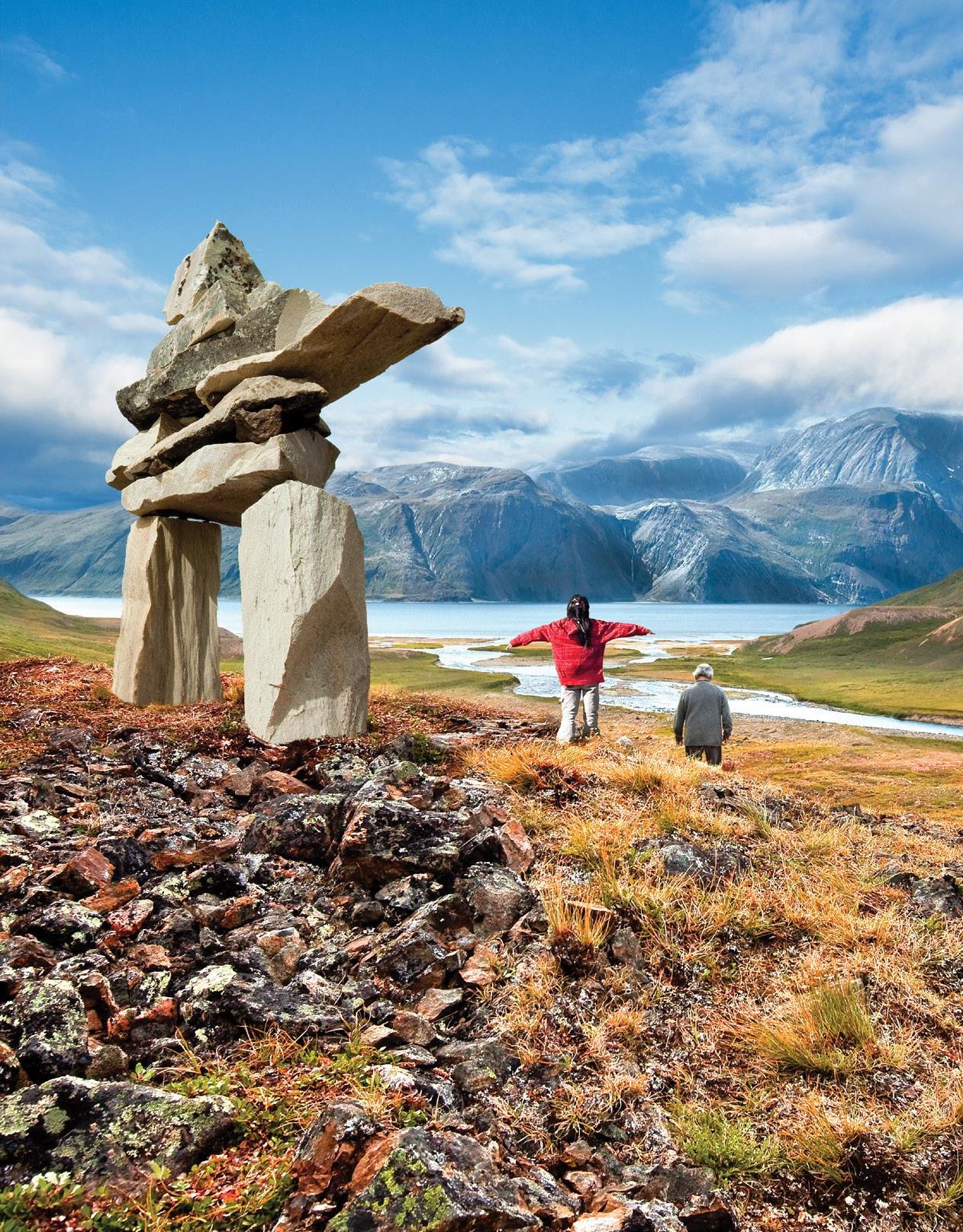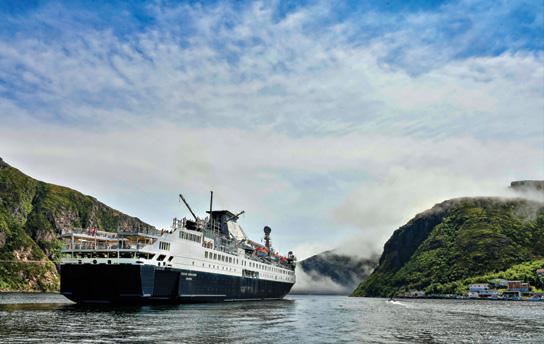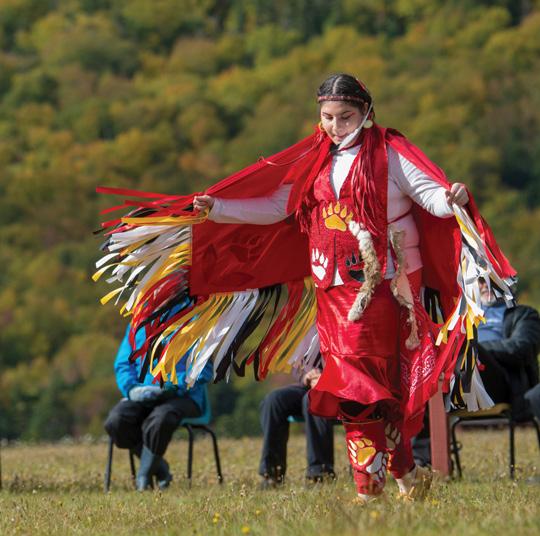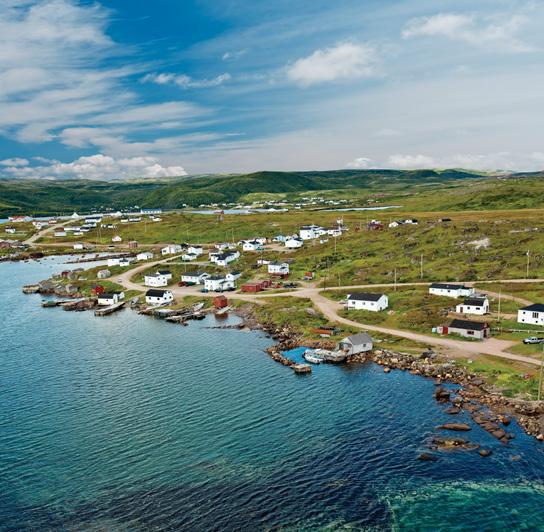
5 minute read
True North
by Ensemble
By Toby Saltzman
A cruise to Newfoundland and Labrador opens the door to a greater understanding and appreciation of First Nations culture.
Light shining off the windows of the white church beckoned us forth like a welcoming invitation as we sailed into Nain Harbour. By now – after a week of cruising aboard Adventure Canada’s Ocean Endeavour – I’d come to anticipate the warm and genuinely embracing welcome of the people scattered in coastal communities of Newfoundland and Labrador. And I’d come to realize that, although I’d gifted myself with this cruise to experience new adventures, scenery, wildlife, and a braggers’ list of sites to cross off my list, the true gift had turned out to be my mind-awakening admiration for First Nations people, along with a deep sense of humility I feel to this day.

ADVENTURE CANADA’S OCEAN ENDEAVOUR
© MICHELLE VALBERG
As a former elementary school teacher, I had taught students about Canada’s Indigenous people, and how throughout 9,000 years of history, they have tamed the environment, lived off rivers and lands, and foraged for food. As intelligent as my words seemed back then, I realized how shallow they were once the ship’s daily lecture series began.

VISIT OF MIAWPUKEK FIRST NATION
© DENNIS MINTY
In Miawpukek, we met Mi’kmaq First Nation Chief Saquamaw Mi’sel Joe, a spiritual leader in his community. He spoke about the importance of preserving his people’s language, culture and traditions. He spoke about their connection to the land: “We must believe two eyes see – see the past and see the future.” The Chief explained how Miawpukek became a model community by ensuring education for its youngsters, reviving their heritage, and helping people get jobs as guides and workers in the area’s growing tourism infrastructure.

L’ANSE AUX MEADOWS
© NEWFOUNDLAND AND LABRADOR TOURISM
Every day, as Ocean Endeavour navigated its way to three UNESCO World Heritage Sites – Red Bay, L’Anse aux Meadows, and the remote Torngat Mountains – onboard experts prepared us to recognize beauty and nature. Professional photographers taught us to take better images. And, on deck, we gathered to spot birds, whales breaching and icebergs floating in the distance.

AERIAL VIEW OF RED BAY
© BARRET AND MACKAY
Every evening, local speakers described realities of life in the north. The lounge was hushed when Maria Merkuratsuk, a cultural educator who works with Adventure Canada, appeared. A tiny woman whose face spoke volumes of a life not easily lived, she spoke in soft, barely audible tones. I felt so grateful that she shared stories about her family and the challenges they’ve faced, including how their lives were disrupted when they were forced from their home and resettled in Nain. Though she did not attend school while growing up, she was able to graduate as an adult and go on to get her diploma in social work. Merkuratsuk now promotes cultural preservation among community members by holding workshops on sewing traditional clothing and crafts, and Inuttitut, her first language.
Excitement grew as I hopped out of the ship and into the zodiac, seated alongside celebrated author Margaret Atwood for the ride to Nain. Atwood, on her umpteenth Adventure Canada cruise, had become the best hiking companion, pointing out rare wildflower and herb species along the trails, even discovering a chunk of Ramah chert, a rare iridescent grey stone, which she donated to the Torngat Mountains research facility.

Living in a small Nunatsiavut community tucked at the base of Mount Sophie, the people of Nain won my heart. Waiting in the harbour to greet us, the mayor was surrounded by a host of townspeople and kids showing off by doing wheelies on their bikes. After visiting the local church and school, and meeting teenage students who spoke about venturing out to schools in the city, I sensed that Nain was on the cusp of cultivating a better life – one where its people experienced a revitalization of their culture.
Visiting Hebron magnified the sad story of the sacred Inuit location, Maria Merkuratsuk’s words still echoing in my mind. The Hebron Mission Station, established by Moravian Christian missionaries in the 1830s, was closed in 1959, which led to the local Inuit being forcibly relocated. Today, the church is being restored, and Hebron now serves as the base camp and research station for Torngat Mountains National Park.
As the voyage continued along scenic fiords, with views of polar bears rambling on mountain ridges, I thought about the blessings of travel and what it has given me, including a greater culture appreciation and understanding of the First Nations people in this part of Canada.

PUFFIN
© MARCEL RENE GROSSMANN
Our Experts Suggest…
CONNECTING WITH NATURE, PEOPLE AND PLACE
For more than 30 years, Adventure Canada has been taking travellers to some of the most inspiring destinations on the planet. They believe that getting people close to nature and immersed in culture can actually transform the way we see the world. Members of Adventure Canada's expedition team share what makes their style of small-ship expedition travel unique.










